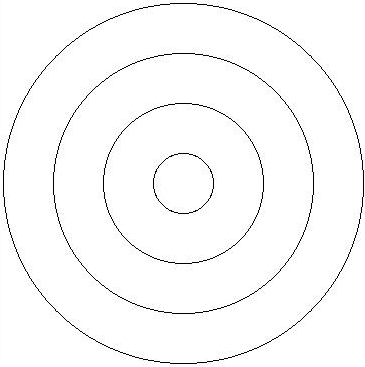TITLE: Making Assumptions
AUTHOR: Eugene Wallingford
DATE: September 01, 2012 10:18 AM
DESC:
-----
BODY:
Patrick Honner has been writing a series of blog posts reviewing
problems from the June 2012 New York State Math Regents exams.
A recent entry
considered a problem in which students were asked to compute the
probability that a dart hits the bull's eye on a dartboard. This
question requires the student to make a specific assumption: "that
every point on the target is equally likely to be hit".
Honner writes:
... It's not necessarily bad that we make such assumptions:
refining and simplifying problems so they can be more easily
analyzed is a crucial part of mathematical modeling and
problem solving.
What's unfortunate is that, in practice, students are kept
outside this decision-making process: how and why we make
such assumptions isn't emphasized, which is a shame, because
exploring such assumptions is a fundamental mathematical
process.
The same kinds of assumptions are built into even the most realistic
problems that we set before our students. But discussing assumptions
is an essential part of doing math. Which assumptions are reasonable?
Which are necessary? What is the effect of a particular assumption on
the meaning of the problem, on the value of the answer we will obtain?
This kind of reasoning is, in many ways, the real math in a problem.
Once we have a formula or two, we are down to crunching numbers.
That's arithmetic.
Computer science teachers face the risks when we pose problems to our
students, including programming problems. Discovering the boundaries
of a problem and dealing with the messy details that live on the
fringe are an essential part of making software. When we create
assignments that can be neatly solved in a week or two, we hide "a
fundamental computing process" from our students. We also rob them of
a lot of fun.
As Honner says, though, making assumptions is not necessarily bad. In
the context of teaching a course, they are necessary. Sometimes, we
need to focus our students' attention on a specific new skill to be
learned or honed. Tidying up the boundaries of a problem bring that
skill into greater relief and eliminate what are at the moment
unnecessary distractions.
It is important, though, for a computing curriculum to offer students
increasing opportunities to confront the assumptions we make and begin
to make assumptions for themselves. That level of modeling is also a
specific skill to be learned and honed. It also can make class more
fun for the professor, if a lot messier when it comes time to
evaluating student work and assigning grades.
Even when we have to make assumptions prior to assigning a problem,
discussing them explicitly with students can open their eyes to the
rest of the complexity in making software. Besides, some students
already sense or know that we are hiding details from them, and having
the discussion is a way to honor their knowledge -- and earn their
respect.
So, the next time you assign a problem, ask yourself: What assumptions
have I made in simplifying this problem? Are they necessary? If not,
can I loosen them? If yes, can my students benefit from discussing
them?
And be prepared... If you leave a few messy assumptions lying around
a problem for your students to confront and make on their own, some
students will be unhappy with you. As Honner says, we teachers spend a
lot of time training students to make implicit assumptions unthinkingly.
In some ways, we are too successful for our own good.
-----

